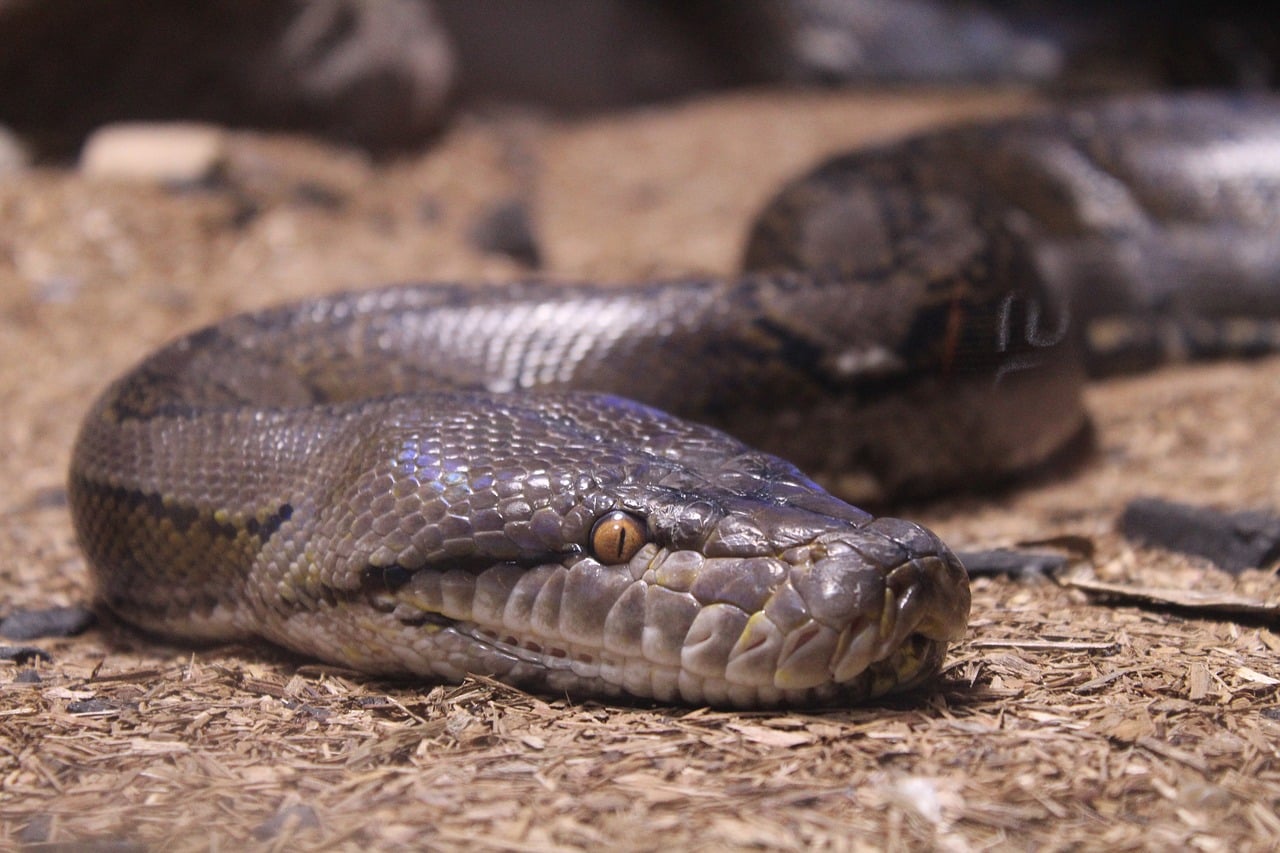It’s no secret that both crocodiles and pythons are vicious predators, and because of their high position in the food chain, they haven’t been on very friendly terms for a long time. Now, a snake scores, as a photographer catches a python swallowing a crocodile, in an intense clash.
The photographs were posted by GG Wildlife Rescue Inc, a nonprofit organization in Australia. The photos of an olive python (Liasis olivaceus) swallowing an Australian freshwater crocodile (Crocodylus johnstoni) appeared on their Facebook page on May 31. The photos were taken somewhere near Mount Isa, Queensland, by kayaker Martin Muller.
Pythons are colossal snakes that don’t care about the size of their meal. Scientists have found everything, from deer that are much bigger than them, impalas, other crocodiles and much more in their bodies. Pythons also don’t care about the other specimen, as they will also eat other pythons. Last year, The Associated Press reported on a python that killed and ate a woman, including her clothes, showing that attacks on humans are more frequent than we might think.
Pythons also very often clash with crocodiles and alligators, and the photographed python swallowing a crocodile is just another proof. Back in 2006, a Burmese python in Florida’s Everglades National Park ate an American alligator and burst open, to its death, as reported by the National Geographic.
However, unlike the Burmese python that is invasive in Florida, the olive python is native to Australia and only found there. It’s considerably smaller than its relative that can grow up to 18 feet, while the olive python can grow up to 13 feet. Its battles with freshwater crocodiles, also known as Australia’s “freshies,” are pretty common. Back in 2014, the olive python was recorded killing and eating a freshwater crocodile at Lake Moondarra, near Mount Isa.
As Live Science explains, pythons are capable of performing incredible gymnastic moves to devour their prey, thanks to their elastic jaws. The lower jawbones consist of two parts that are connected by an elastic ligament, which lets the bones spread widely apart. Once it takes on its prey, the snake first “walks over it,” in a process known as the pterygoid walk. It then spreads its jaws to hang onto the prey and compresses its muscles while swallowing it.
Thanks to their genetic adaptations, pythons aren’t afraid of digesting huge meals at once. According to research from 2013, Burmese pythons can quickly change their metabolism after they eat, and even enhance their internal organs so that they are adapted for larger prey. These modifications also include the intestines, pancreas, heart and kidneys, so that they can take on a huge calorie intake.





